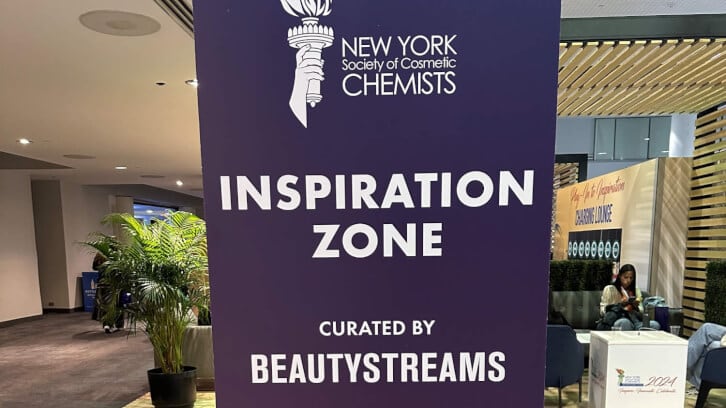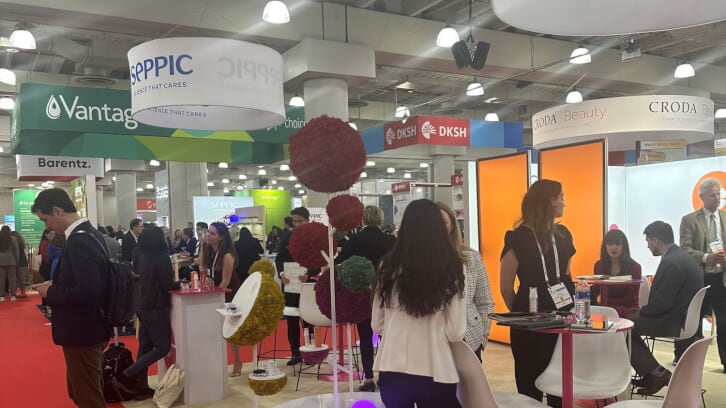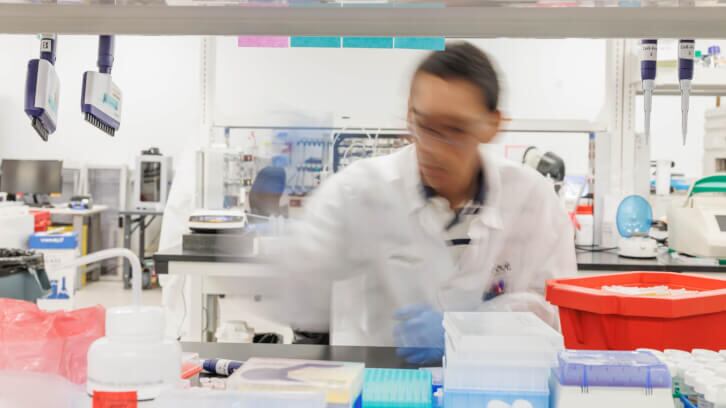Speaking during the recent NYSCC Suppliers’ Day, Qian Zheng, MD/PhD - SVP Head of Advanced Research North America & Global Regenerative Beauty Discovery Domain at L’Oréal Research & Innovation, explained how the company is leading a Green Sciences strategy with a goal to significantly improve the environmental profiles of its products by the end of the decade.
These lofty goals will be achieved via four key strategic pillars: Sustainable Cultivation, Green Extraction, Green Chemistry, and Biotechnology & Fermentation.
In an exclusive interview with CosmeticsDesign, Dr. Zheng explained that the company's global sustainability program is “the umbrella vision for our company's sustainability goal, and under that sustainability goal, we want to reduce our environmental impacts in all different aspects: from fighting climate change to water usage reduction, to preserving biodiversity, and to protect our natural resources.”
Under this umbrella, “our company has set very clear targets for our 2030 sustainability goal”, she said, including “95% of ingredients being from renewable sources, and 100% of the product will be eco-designed.”
Currently, L’Oréal is already making great strides towards achieving its goals: “even now, we're doing really well, we're at 65% for the raw material as renewable, and also over 80% that are biodegradable,” said Dr. Zheng. However, “we know there are big gaps that we do need to address with science, with innovation, [and] with transformation”, she added.
To accompany the company’s vision of its Research and Innovation (R&I) transformation, “our needs for sustainability are to be respectful to our environment,” Dr. Zheng shared. “Under that umbrella,” she clarified, it is “our goal for green science transformation” through “our R&I’s contribution, both for product performance, for elevating the benefit for our consumer, [while] at the same time being responsible for environment.”
A deeper look at the four pillars: Sustainable Cultivation
The L’Oréal for the Future program is supported by the four aforementioned strategic pillars which combined are being leveraged “to make a complementary approach to greenify our entire ingredient portfolio,” explained Dr. Zheng. “With that, and also on top of our internal approach,” she continued, “we're open to the external world to bring expertise from outside to build and collaborate on this sustainability journey together.”
Under the Sustainable Cultivation pillar, L’Oréal is investing resources into local communities and their economic development to support more sustainable ingredient sourcing practices. For example, the company is working in partnership with communities in Morocco by building a number of local farms and gardens. As Dr. Zheng explained, “in the Ourika community gardens, we cultivate specific indigenous plants and over 200 different types of indigenous plants,” and that “different species have been cultivated in that local area, representing the local biodiversity.”
She further explained that by preserving the flora and fauna grown in this region, L’Oréal can “leverage those as our sustainable source for ingredients while others, like Sainfoin and Phacelia, serve as green manures to enrich the soil,” and “at the same time, it's holding flat on the land, so we're not taking additional resources from outside.” Additionally, the gardens in these communities “also house a laboratory for experimentation and the study of plans, from which active ingredients are derived,” she added.
L’Oréal’s supports “the creation of a cooperative of over 30 women to grow each and every plant in the gardens,” said Dr. Zheng, and “this unprecedented social program strives to promote the skills of the region’s inhabitants to advance their financial independence.” Further, “we are actually giving back to the community, [by] encouraging local employment through that sustainable cultivation and farming locally,” she shared.
Another example of L’Oréal’s investment in sustainable cultivation through local community engagement is in Thailand. “Since 2016,” said Dr. Zheng, “L'Oréal has been working with small rice farmers in Thailand's Isan region on a project to source rice bran responsibly,” and “alongside a local NGO, we're helping four cooperatives adopt climate-smart farming methods that cut down on greenhouse gases and make them more resilient to environmental shifts.”
The company’s investment features “four pilot areas where we've stopped ploughing to protect the soil, introduced agroforestry to boost farmers' incomes and protect wildlife, and shifted to a water-efficient rice cultivation method to lower water use and emissions,” she explained, which has seen great success thus far: by 2022, this initiative supported 1,186 local farmers, 59% of whom are women.
A deeper look at the four pillars: Biotechnology & Fermentation
In addition to investing in sustainable cultivation via local communities, L’Oréal is also devoting resources to investing in biotechnology and fermentation. For example, as reported by CosmeticsDesign last year, the company has entered into a strategic partnership with Debut Biotechnology, a company that is “is the only biotech company with fully vertical integration capabilities incorporating ingredient discovery, cell-free, biofermentation, formulation, finished clinically-backed scalable ingredients and brand creation,” according to its website.
Regarding the investment into Debut, Dr. Zheng shared that it is a great example of the types of partnerships the company is looking for, “and not limited to biotech, but in all types of different industries as long as it fits our innovation goals.” Debut’s model, she explained, is an “approach that can be scalable, can be highly efficient,” and is also “super precision and customized.” When looking to invest in innovative technologies to support improved sustainable practices, she added, “a new capability like that is something we're looking for, not limited to one type of company, but opening up to different industries.”
The same mindset applies to L’Oréal’s approach towards investing in fermentation technology. “It's the new era for fermentation to really have specifically design molecules and targeted fermentation for highly potent ingredients,” said Dr. Zheng. Therefore, L’Oréal has invested into “a facility in France actually focusing on biofermentation [and] focusing on developing new type of raw materials and actives.” With that pipeline, added Dr. Zheng, “we're looking forward to having novel innovative and potent ingredients while being sustainable.”
A deeper look at the four pillars: Green Chemistry
During her Suppliers’ Day keynote presentation, Dr. Zheng addressed the company’s investment in Green Chemistry and spoke “about examples on the industry side,” also discussed how L’Oréal is “actively collaborating with other areas like academic institutes for example MIT, UC Berkeley or Stanford Research Institute, not only focusing on the current technology or technology capability, but looking into the future,” she summarized.
As an example, Dr. Zheng highlighted L’Oréal’s research into the skin microbiome, which is “really hot in the research field,” she described. By asking questions about how “we [can] leverage the microbiome, the microbes, as well as biotech to really build the future,” she explained, the company is working towards how we can “really be disruptive in a scientific territory.”
To support research initiatives in this area, L’Oréal has “partnered with the world leader in microbiome research, The Center for Microbiome Innovation at UC San Diego,” Dr. Zhang explained. “With them, we actually built an innovation program to look for how we leverage microbiome science and develop new solutions for the future for skin health and skin aging,” she said.
A deeper look at the four pillars: Green Extraction
The final pillar of the L’Oréal for the Future focuses on investment in Green Extraction technology, which Dr. Zheng admitted is a challenging area of sustainable development. “When harvesting from nature, we need to think about scalability, we need to think about purification, precipitation, or the downstream processing to really have the quality of the compounds or the molecules that we're looking for,” she explained.
“Usually, when things are coming from nature, be it from microbes, or cell source or from like a plant extraction, many times it's a mixture,” she shared. As a result, “we still need to ensure the safety is there, the purity is there, we actually harvest what we are looking for, and ensure the testing of efficacy is there,” she said. “We want performance for our consumer,” she added, and “it's not a straightforward step, so we have many scientific strategies, and the different characteristics that apply towards that.”
When addressing investments into Green Extraction technologies, as well as other avenues towards implementing more sustainable practices, it is essential, Dr. Zheng emphasized, that “we do not trade out either for product performance, or for ethical practices,” as “both are super critical, and we want to be on top of both.”
“Of course,” she added, “there are different ways to innovate in terms to reach that performance and different ways to innovate for sustainability.” Therefore, she continued, “we do need to find a balance in between all this…sometimes it might not be a tradeoff, it’s about creating something new and exciting.”
For example, she illustrated, “if we have a certain performance of a current product, we want to make it more sustainable, but then it doesn't have to mean that we replace exactly one to one.” Instead, she continued, “sometimes creating this functional alternative, which is not exactly the same, but bringing actually a similar or better function towards performance, that could be exciting.”
Further, innovation in this area is sometimes “about creating something completely new that consumers are not used to or not understanding, even nowadays: it could be a brand-new territory for disruptive innovation by precision, by performance, and also by creation.” Therefore, she concluded, “it could be a new territory, [but] it's not about trade off.”
A greener future for all
Regarding the role that she envisions for L’Oréal’s Green Sciences approach in shaping the future of the global beauty industry, Dr. Zheng said that “we're clearly driving sustainability in the beauty space: not only for us, we want to have the entire industry to move with us.” On top of that, she added, “we're also educating our consumers to have more acceptance and adoption of the concept of sustainability,” which is “one way to really impact millions or billions of consumers in their daily lives.”
Beyond beauty itself is “is how a consumer perceives the world, [and] do they have a sustainable mindset in their daily life,” she shared further. “We can actually approach through that, and of course, we have partnerships outside beauty industry where we actively collaborate and we can also influence our partners,” she explained.
Moving forward, “L’Oréal is being super ambitious in the territory of sustainable innovation, to elevate performance at the same time being even more responsible to our environment,” said Dr. Zheng, and will continue to do so. “We are really activating the Green Science transformation from the research and innovation side, we're accelerating, we put our best towards Green Science innovation, and at the same time, we understand where we need to stay humble,” she summarized.
Aligned with this mentality, she concluded, is the understanding that “we cannot do everything by ourselves, so we're opening up to the open innovation mindset and ways of working.” This means that “we're actively looking for collaborations with our external partners from all different entities, as long as we have the shared value and mindset.”





